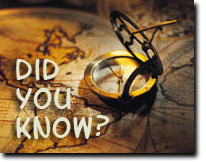|
Four stitches to sew up that finger. I always wondered why my grandmother didn't keep her big knives too sharp. If we could stick my finger under a microscope we would see several kinds of cells in action. We would see cells fighting off infection, cells replacing damaged skin, and cells stopping the flow of blood all working at the same time to repair the cut.
 Recall that cells spend most of their life performing a special job (interphase of the cell cycle). A liver cell may be storing some sugar from lunch, or a leaf cell can be carrying out photosynthesis. The cells of living things are very busy! Scientists call this busy time “interphase.” When it is time to make a new cell, the process of mitosis begins. Recall that cells spend most of their life performing a special job (interphase of the cell cycle). A liver cell may be storing some sugar from lunch, or a leaf cell can be carrying out photosynthesis. The cells of living things are very busy! Scientists call this busy time “interphase.” When it is time to make a new cell, the process of mitosis begins.
Remember, the newborn baby picture of me? Just imagine, about 9 months earlier I was a single cell and now, as an adult, I have billions of cells (Roll over the image to see me now.)
It's all a result of mitosis.
Or think about this, one small acorn becomes a huge oak tree.
Again, all a result of mitosis. So you see, in addition to being important in the process of repairing damaged or worn out cells, mitosis is the process by which organisms grow.
 Mitosis occurs
Mitosis occurs
- when a cell is damaged and needs to be replaced
- during normal cell growth
As with most things there are exceptions. A few types of cells are not able to reproduce. In other words, you have what you will have. Nerve cells, like the ones found in your brain, are not able to reproduce. Mature muscle cells also seldom divide. However, most other body cells are able to go through mitosis.

Investigating the Phases of Mitosis
Mitosis is actually one continuous process in which identical copies of DNA from one old cell are distributed to two new cells. Scientists break the process up into phases so that they can study and explain the process more easily. Let's see how this important biological process works.
- Access the Stages of Mitosis portion of this activity at the following link.
Stages of Mitosis
When you have finished the activity at this link move on to the Travel Log to complete the lesson.
Images © clipart.com 2006
|



